Public comment sought regarding Hurricane Sandy Disaster Relief grant awards
On July 29, 2014, the Delaware Division of Historical and Cultural Affairs announced three awards for the Hurricane Sandy Disaster Relief Assistance Grants for Historic Properties program and is seeking public comment on its finding that the selected projects will not adversely affect historic properties.
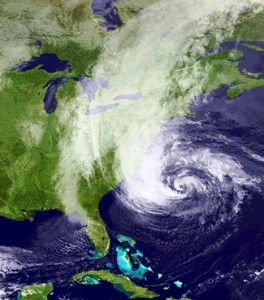
The grant program is funded under the Disaster Relief Appropriations Act, 2013, passed by Congress and signed into law by President Obama in response to the effects of the destructive hurricane which struck the East Coast of the United States in late October 2012. As part of the act, $50 million was appropriated to the National Park Service to cover the costs of preserving and/or rehabilitating historic properties damaged by the storm. Subsequently, the National Park Service allocated $1 million for Delaware’s component of the program which is being administered by the Division of Historical and Cultural Affairs. The purpose of the program is to help return damaged historic properties to useful condition, preserving the state’s cultural heritage for future generations.
The division publicly announced the availability of the grants and posted information on the program in January 2014. To qualify, properties were required to be listed, or eligible for listing, in the National Register of Historic Places, and have documented damage that resulted from the effects of the storm. Eligible properties included those owned by private individuals or organizations, local governments, or the state.
The division received three applications. A technical-review committee found that all three of the applications qualified for funding according to the selection criteria and application requirements. Because the currently approved applications did not exhaust the full amount of funds awarded to Delaware, the division may elect to hold another round of grant applications. Additionally, in accordance with its agreement with the National Park Service, the division plans to apply some of the remaining funds toward improving data on the location and nature of historic properties in areas vulnerable to such storm events, assisting in disaster planning.
The three historic properties that will be assisted by the program are as follows:
Harbor of Refuge Lighthouse
Location: Situated on the outer breakwater in Lewes harbor
Built: 1926
Historical significance: Listed in the National Register in 1989 as a contributing structure within the National Harbor of Refuge and Delaware Breakwater Harbor Historic District, a nationally significant aid-to-navigation and safe harbor
Ownership: Non-profit
Storm damage: Results of wind-driven water and waves
Federal grant: Up to $360,000
Scope of work: Replacement of dock and stairs leading to lighthouse; assessment of condition of lighthouse
Historic-preservation outcome: The grant-funded work will define the critical preservation work necessary to maintain and preserve the lighthouse, and will restore proper access to allow such work to occur and to further the organization’s public interpretation and educational programming
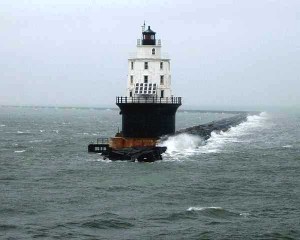
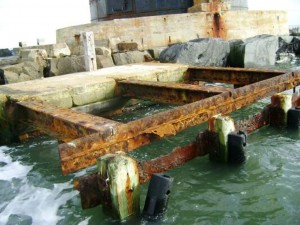
Milford New Century Club
Location: 18 N. Church St., Milford
Built: 1885
Historical significance: Individually listed in the National Register in 1982 as part of a multiple-property nomination for the city of Milford, the building is significant for its architecture and as a long-standing community center, a purpose it still serves
Ownership: Non-profit
Storm damage: Results of high wind, wind-driven rain and rising water
Federal grant: Up to $60,000
Scope of work: Replacement of roof and associated interior and exterior repairs; exterior painting and associated repairs; replacement of HVAC system
Historic-preservation outcome: The grant-funded work will secure the building’s exterior to prevent further damage and deterioration, and will allow the building to again be used year-round for the organization’s civic projects and rental for local events
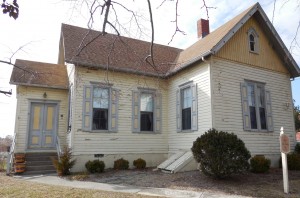
Phillips Potato House
Location: 7472 Portsville Road, Laurel
Built: Circa 1900
Historical significance: Individually listed in the National Register in 1990 as part of a multiple-property nomination for sweet potato houses, a specialized agricultural outbuilding in Sussex County. The potato houses reflect the modernization of agricultural practices in southern Delaware during the first half of the 20th century including the emergence of truck farming
Ownership: Private
Storm damage: Results of high wind, wind-driven rain and water run-off
Federal grant: Up to $42,000
Scope of work: Removal of damaged asphalt siding and repair of wood siding and trim; window repair; removal of metal roofing and restoration of wood shingles; foundation repairs
Historic-preservation outcome: The grant-funded work will secure the building’s exterior to prevent further damage and deterioration, and provide an opportunity for returning the building to agricultural use and/or for an adaptive reuse to include public interpretation of agricultural practices
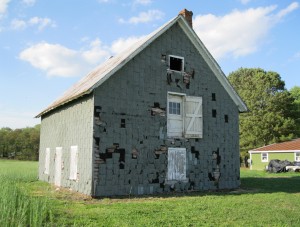
In order to receive funding, the grantees must ensure that the repair work is consistent with the Secretary of the Interior’s Standards for the Treatment of Historic Properties, and must maintain and preserve the properties for a period of time thereafter. Grantees must also document that consulting and contractual services have been open to competitive bidding and selected in accordance with state and federal law. Grantees must also comply with a number of other reporting requirements to demonstrate that the project is properly carried out. These commitments are documented in a grant agreement that is signed by the division and the grantee.
The division has received the National Park Service’s approval to award these three grants on the condition that all program requirements are being met including compliance with federal historic preservation and environmental laws. Because the program is federally-funded, Section 106 of the National Historic Preservation Act requires that the projects’ effects on historic properties are taken into account. Section 106 also affords local governments, interested parties and the public the opportunity to comment on the projects. For more information on this law and the public’s role in the review process, go to the federal Advisory Council on Historic Preservation’s publication, “Protecting Historic Properties: A Citizen’s Guide to Section 106 Review.”
To fulfill its Section 106 responsibilities, the National Park Service has negotiated a programmatic agreement with the 12 states affected by Hurricane Sandy. This agreement will govern the project-review process for the states’ grant programs, including provisions for public notification and involvement in the program. The agreement also prohibits use of the funds for work that would adversely affect historic properties.
The division finds that the projects will not adversely affect historic properties because:
- The proposed work will be designed to meet the above-referenced federal standards
- The grantees must make legally-binding commitments to ensure that the work is properly carried out
- The division and the National Park Service will have continuing oversight of the projects
To comment on this finding, or to request additional information about the grant program, the Section 106 review process, or the programmatic agreement, contact Gwen Davis, deputy state historic preservation officer, at 302-736-7410 or gwen.davis@delaware.gov. Comments must be received by Aug. 29, 2014.
Press inquiries should be directed to Jim Yurasek at 302-736-7413 or jim.yurasek@delaware.gov.


